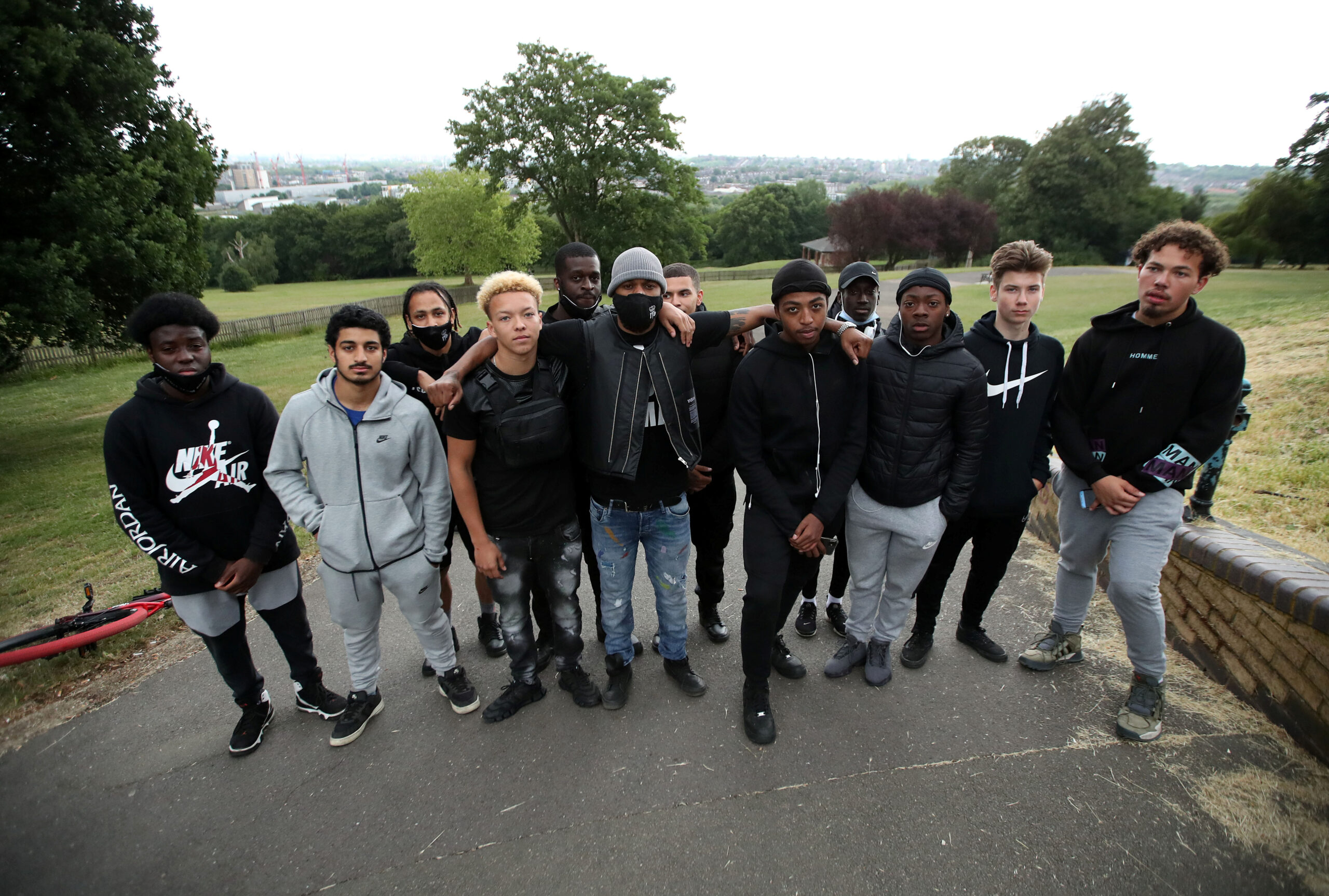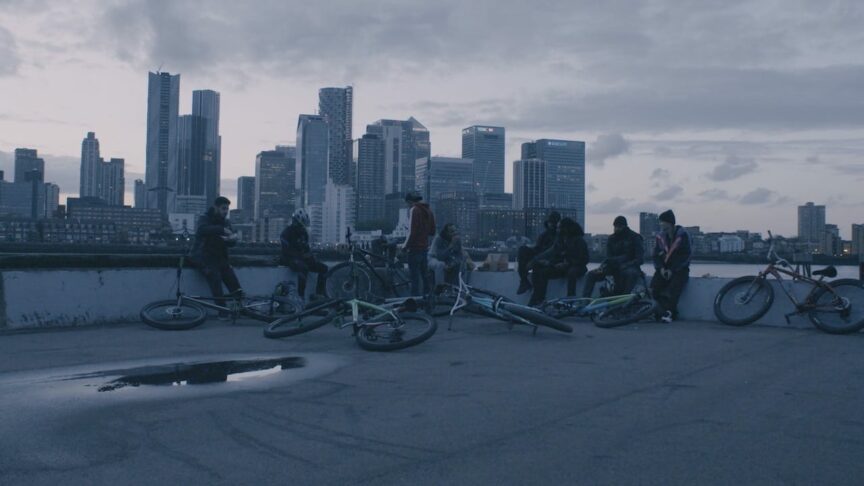Who Counts As A Cyclist In London?
Not young Black boys, that’s for sure.
by Moya Lothian-McLean
27 April 2023

Ten years ago, then mayor of London Boris Johnson outlined his vision for a more bike-friendly city. “I want more women cycling, more older people cycling, more Black and minority ethnic Londoners cycling, more cyclists of all social backgrounds,” he wrote.
Since Johnson (or a put-upon advisor) penned those words, the number of cyclists zipping along London’s roads has risen by 25% – thanks, in part, to a pandemic-related boost. Cyclist diversity has also increased: in 2021, TfL research found that for the first time ever, Black, Asian and minority ethnic Londoners were as likely to have cycled in the 12 months prior as white Londoners. Still, a press statement proclaimed, “significant barriers” to diversifying cycling in the city remain, including the need for more protected cycle routes, less traffic on minor streets and better cycle parking provision.
All true, I’m sure. But there are no doubt more insidious social barriers that not only prevent cycling among certain demographics, but actively label existing cyclists within these groups as anti-social nuisances on wheels.
This is something I’ve been mulling over since becoming a regular cyclist myself, one of those converted during the pandemic. I tend to cycle outside of commuting hours, along with many of London’s riders who aren’t white, middle class and racing down Cycleway 14 at 8am to their senior consultancy job at Deloitte. In particular, I’ve noticed how many young Black boys and men from low-income backgrounds use bikes: schoolchildren and teens zooming about on – usually cleverly jimmied – TfL and Lime bikes, older cohorts perched on mountain bikes and BMXs. These aren’t shiny-suited, upwardly-mobile ethnic minority Londoners that ‘diversity’ reports seem geared towards getting on a bike in the first place. There’s already a rich cycling tradition within these circles. But their bike use isn’t viewed as an opportunity for engagement and further investment – instead, it’s criminalised, as a new documentary lays bare.
If The Streets Were On Fire, directed by Alice Russell, examines the fortunes of BikeStormz, a cycling initiative set up by activist Mac Ferrari-Guy. BikeStormz is intended as a space for young people away from the epidemic of violent crime ravaging low-income communities in London (a burden disproportionately carried by ethnic minorities). Throughout the film, its protagonists speak about two Londons: the city as seen by those removed from the crisis (and often setting its political agenda from government, thanks to the constrained power of the mayoralty) versus the city experienced by those on the frontlines. Social scaffolding is collapsing thanks to 13 years of Conservative cuts. Research shows that economic deprivation is the primary cause of youth violence, whatever the role of factors like social media in fanning the flames.

BikeStormz regularly attracts hundreds of young, majority male cyclists – thousands when it comes to its annual central London ride against knife crime. The point of the project is to take kids away from where the blaze – the potential for violence – is hottest, Ferrari-Guy explains at one point in the film. This means physically removing people from hotspots where trouble can occur and bringing them into a community that offers respite and an alternative path forward. On a shoestring, BikeStormz is attempting to plug a gap left by the erosion of social services and spaces for young people. That’s not how the authorities see it, though.
Captured on camera is the real-time attempt to criminalise BikeStormz riders by various authorities. In one scene, Ferrari-Guy is shown in a meeting with an unnamed Met police branch discussing complaints made about BikeStormz. A white, middle-aged male officer reels off grievances. The size of BikeStormz rides is creating “significant community tensions”, he says. Youngsters on their bikes are “intimidating”, and their behaviour “bordering on the criminal”. He cites graffiti, littering, and even wheelies as problems.
Repeatedly, the officer emphasises the distress BikeStormz is causing to “members of the public”. The young cyclists participating in the ride, it’s clearly conveyed, don’t belong to this group. Instead, they threaten it – and wider social order.
“We’re getting to the stage now where we’re actually looking at arresting some of the youngsters,” he finishes. Ferrari-Guy tries to explain the project and the backgrounds that a lot of the kids are coming from. “They’re kids!” he says, exasperated. “They have nothing – no upbringing […] [They] can’t get a record, it’s not fair”. It’s to no avail.
Later, an on-the-street encounter with police drives the point home. Kids are popping tricks in a central London tunnel. Ferrari-Guy is remonstrating with two officers at the mouth of the underpass. The officers are unmoved – they’ve had reports from “cyclists who are members of the public” who say they’ve been unable to get through the tunnel. As Ferrari-Guy refutes these claims, one officer turns sharply. “Don’t stand behind me,” he says abruptly to a small Black boy sitting on a bike, watching the interaction. When Ferrari-Guy tries to assure him this child will do him no harm, the officer bites back. “It’s a safety thing,” he snaps.
Undeterred, Ferrari-Guy returns to his original point: dispersing BikeStormz gatherings is an obstacle to wider strategies to reduce knife crime in the city. “It’s got nothing to do with knife crime,” says the officer. “It’s obstruction of a highway,” his partner chimes in. Ferrari-Guy and the policemen are speaking two different languages. As the documentary reaches its end, BikeStormz is slowly forced to cede ground, being confined at one point to an out-of-the-way industrial wasteland for its gatherings.
It’s a damning indictment of the gulf between the words and deeds of London’s political leaders and the Met. These bodies claim they are committed to tackling violent crime and providing spaces for vulnerable young people, but also to broadening diversity in cycling. But the treatment of the BikeStormz riders shows that frankly, they haven’t got the imagination or will to do either. Even when grassroots activists do all the grunt work of organising much-needed schemes, they find themselves and their charges threatened with criminal action rather than financing.
Not that funding for cycling enterprises is readily available. Successive cuts have seen to that, with corporate philanthropy often filling the gaps in a patchwork fashion. Meanwhile, TfL bikes – which are costly at the point of use – remain absent from some central south London boroughs where high ethnic minority populations intersect with lower-income households. When (limited) TfL docking station expansions are announced, it’s usually due to an influx of property developer money – part of the problem in how London is being reshaped for the rich. All these issues are entwined. The question of who gets to be a ‘cyclist’ in our capital is one that really asks: who is welcome here? And who gets the right of way – and visibility – on these streets?
Biking is so much more than a leisure pursuit. Now in his twenties, Miles C credits it with providing him with a way out of the gang culture he got swept up in as a teen on his estate. Shot after shot in the documentary shows him lovingly tending to his bike, sometimes assisted by his young son. Miles doesn’t just ride: he builds, tinkers, practises, and is a leader for younger attendees at BikeStormz events. Through biking, he’s developed a hugely valuable skillset, both practical and emotional. At an event for the release of the film, he told me riders can spend up to 12 hours a day on their bikes. If young men like Miles aren’t cyclists, who is?
Moya Lothian-McLean is a contributing editor at Novara Media.


